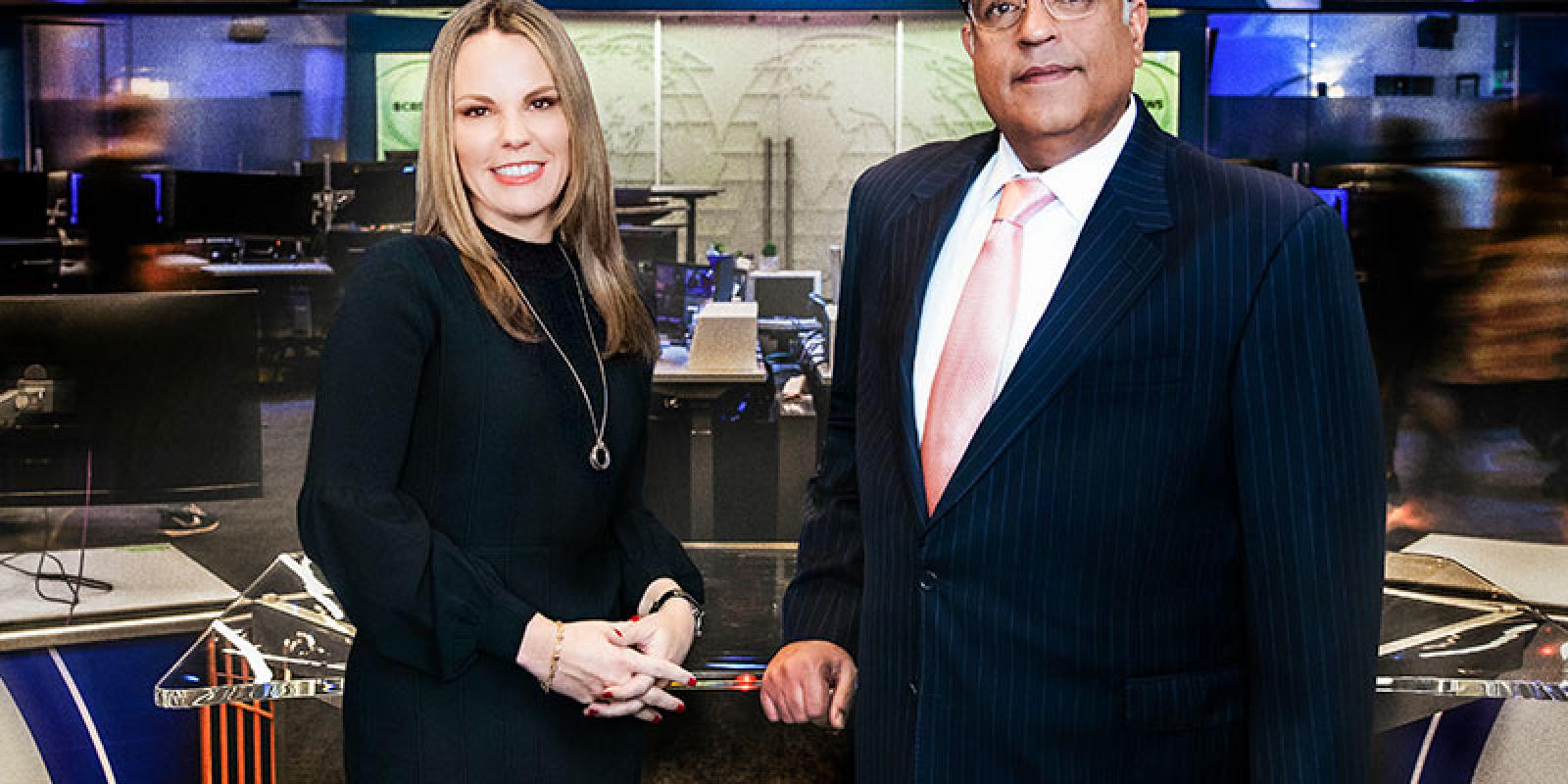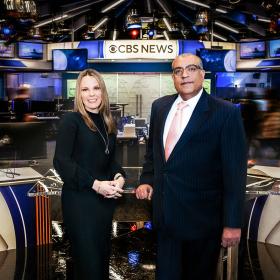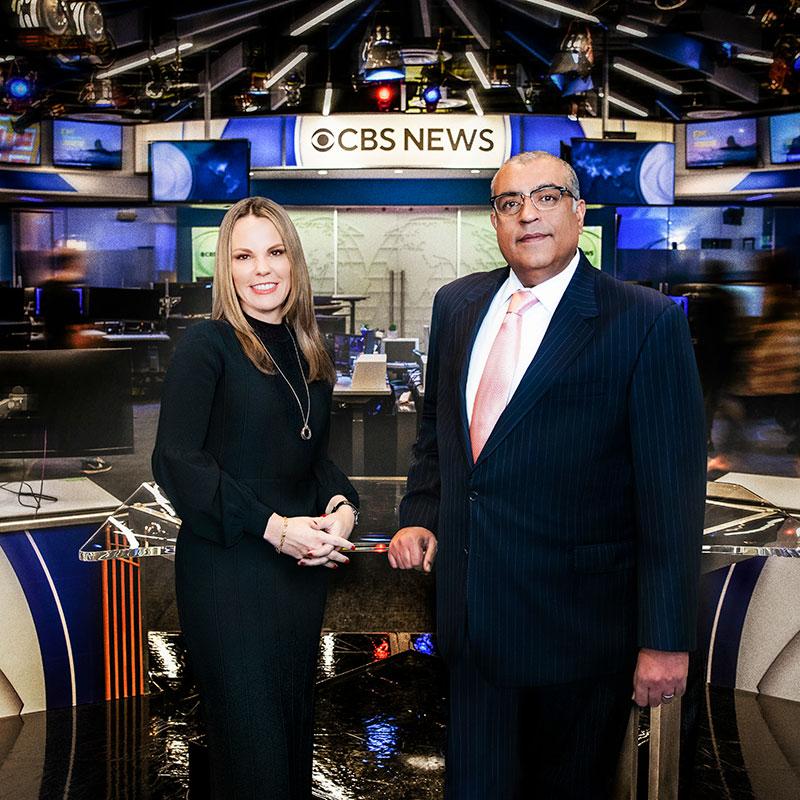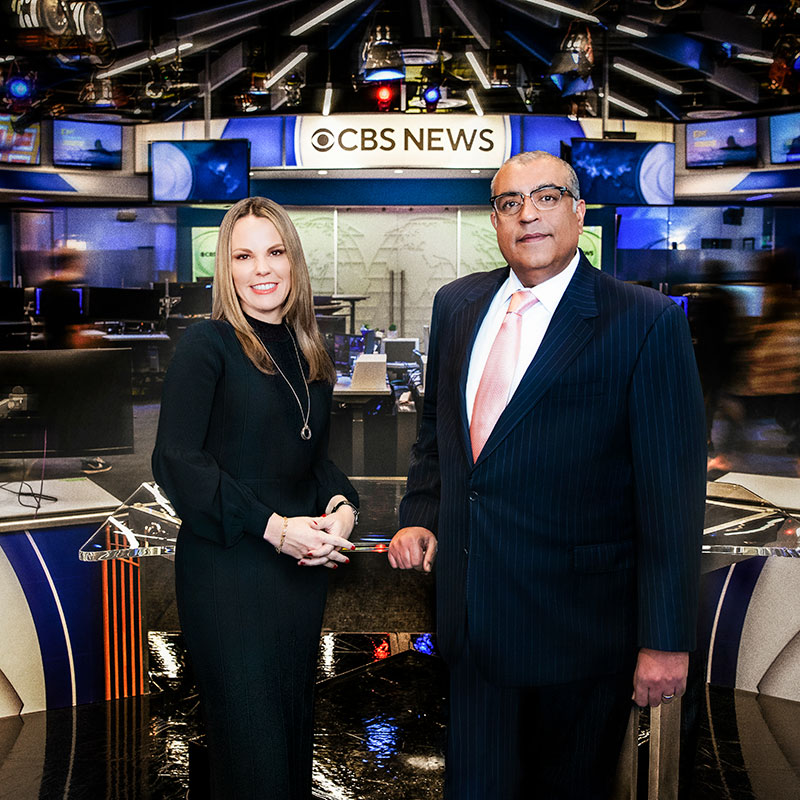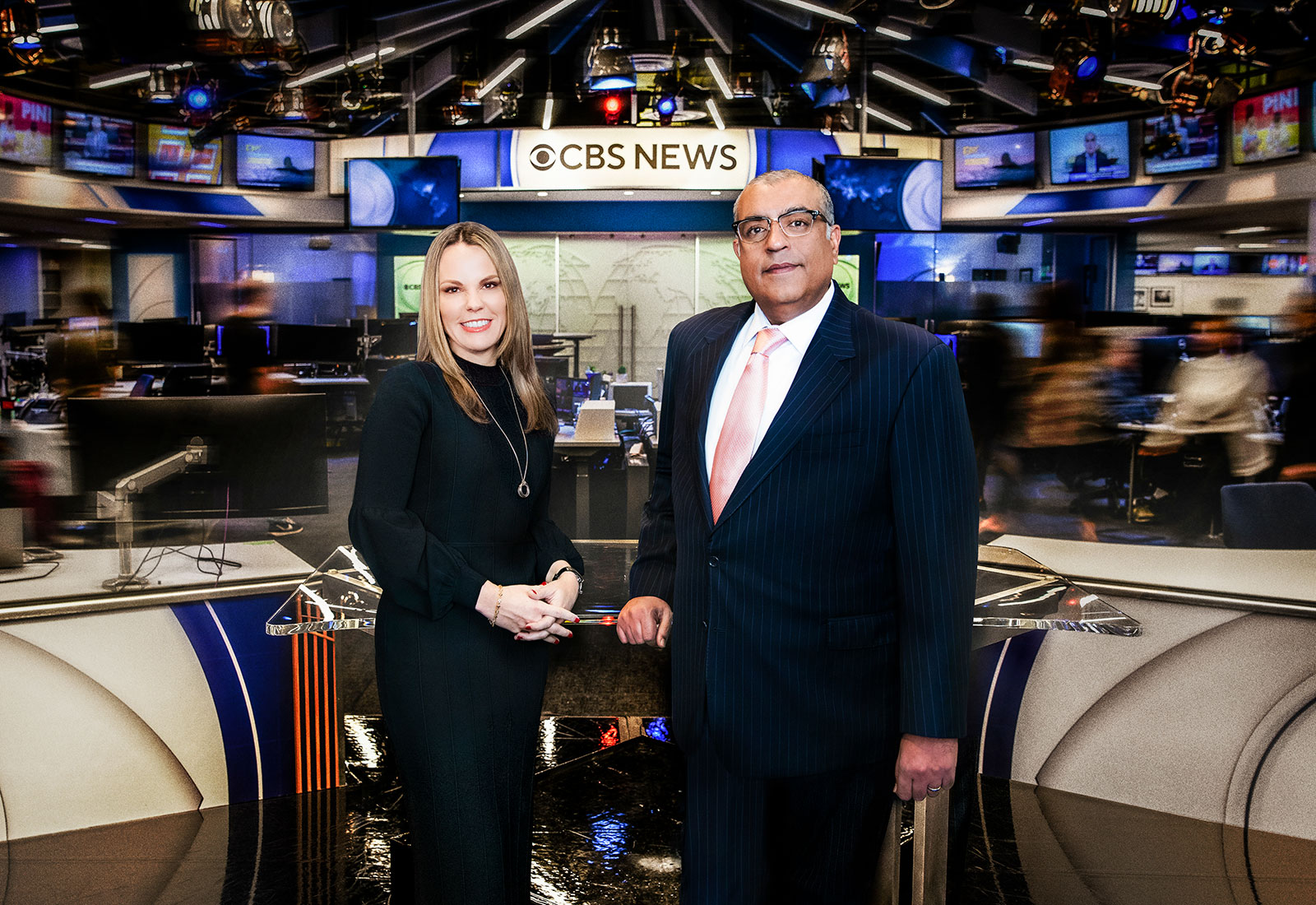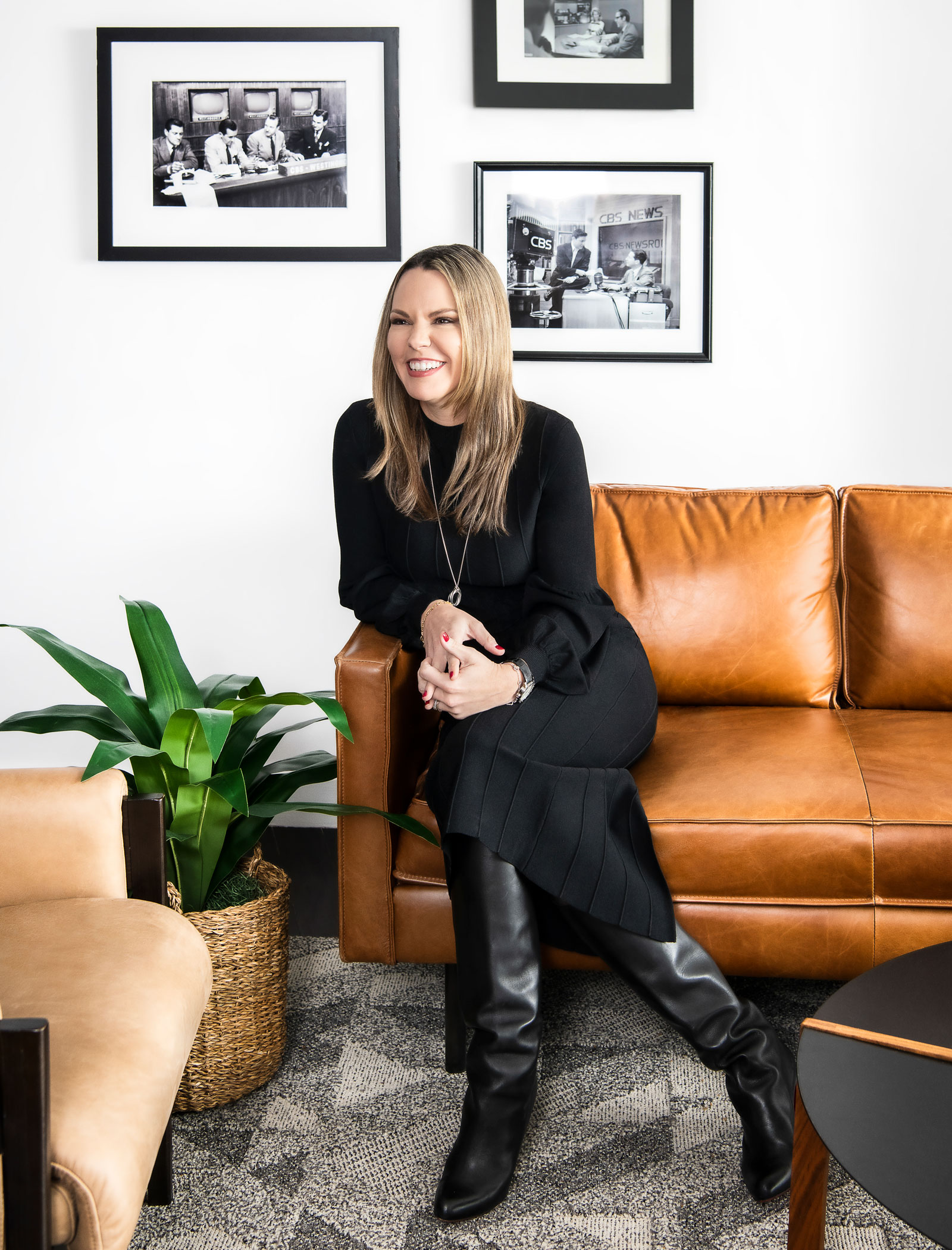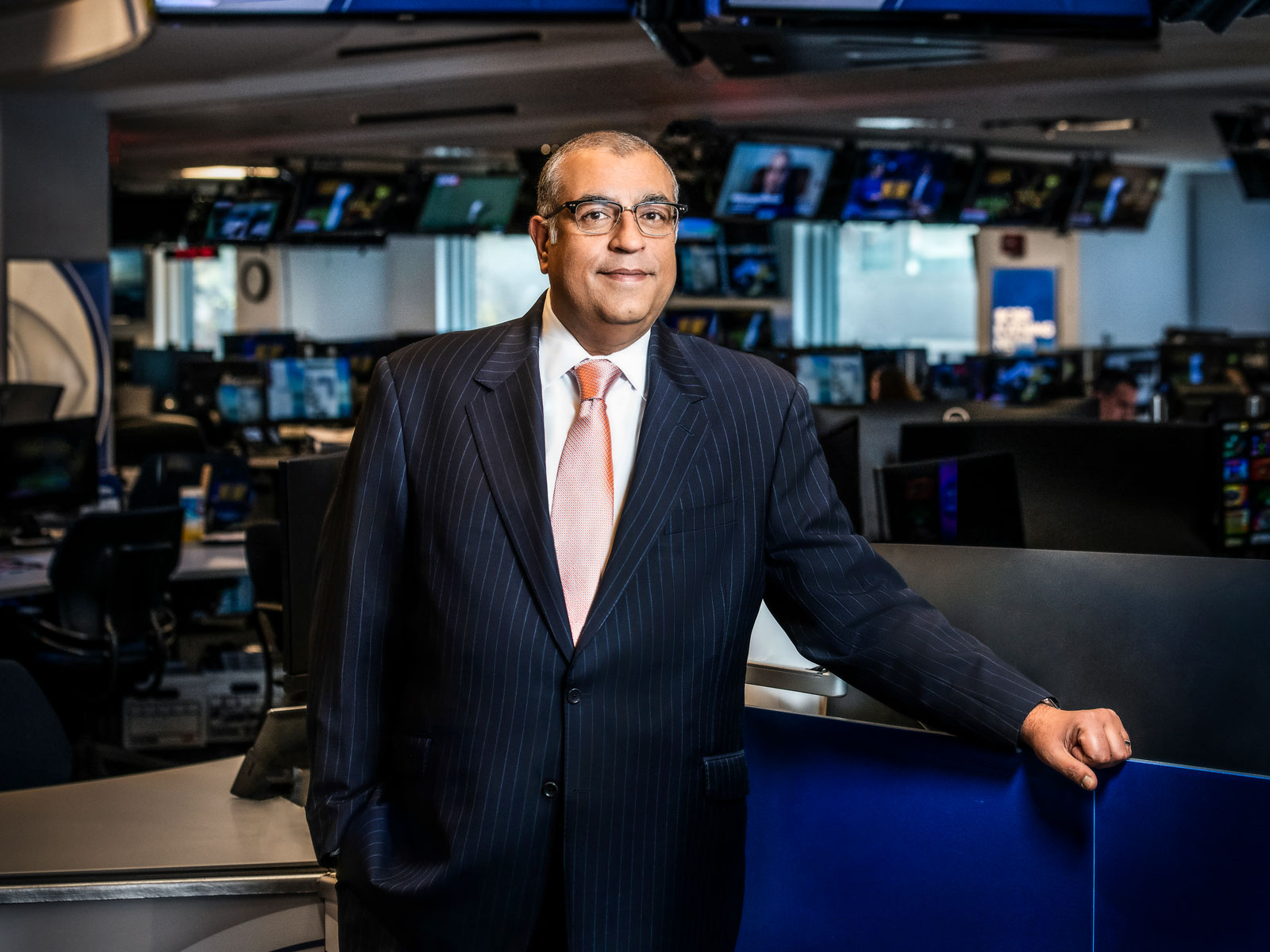MAY 16 2023
By Kelby Clark
Photos by Michele Crowe
Our In the Office With ... series, gives Paramount executives the opportunity to reveal a little bit about who they are, how they lead, and what drives them in the day-to-day.
Wendy McMahon and Neeraj Khemlani are reimagining CBS News for a streaming era. The presidents and co-heads of the newly combined division were tapped two years ago to drive cross-collaboration and bring CBS’ network news, 27 company-owned TV stations, and their national and local streaming and digital platforms under one umbrella.
Under their leadership, the division transformed into the preeminent local to global news organization that reimagined national streaming, launched the company's 14th local news streaming channel, announced a content partnership with the Weather Channel, and integrated digital and linear — formerly two separate businesses.
The two executives had never met prior being recruited by CBS CEO George Cheeks to jointly run the now unified CBS News and Stations organization.
McMahon, who focuses on local stations, says her and Khemlani's career experiences naturally led them to focus on their specific lanes.
They worked in and around newsrooms their entire careers, both with previous experience at CBS: McMahon as a branding and marketing executive at the CBS Network-owned stations in Minneapolis and Boston; and Khemlani as a producer on 60 Minutes II and 60 Minutes.
Both also introduced enhanced weather coverage. Khemlani forged a Network partnership with the Weather Channel that is delivering immersive weather reporting with enhanced graphics and joint climate investigations; McMahon’s team elevated local weather coverage by launching “Next Weather” and “First Alert”-branded weather segments across Stations and their streaming channels.
Ahead of their two year anniversary as co-heads in May, Khemlani and McMahon spoke to the Paramount Newsroom about the benefits of partnership, how technology is changing news production, and their career trajectories.
![]()
Our core advantage and differentiator is our iconic portfolio. There is no competitor for 60 Minutes. There is no competitor for CBS Sunday Morning.” - Neeraj Khemlani
Kelby Clark: Can we start with an obvious question: How do you approach being co-leaders?
Wendy McMahon: Our past experiences led us naturally to our specific lanes. But, we both believe that if our resources and content are combined to super-serve the news and information to our viewers, then we will be positively positioned to continue to grow our brands in the future. The convergence will enable us to do so in a way that our competitors simply cannot. And our people, our teams are doing incredible work daily to turn that vision into a reality.
Neeraj Khemlani: We work together on the processes and technology that allows content to move across the groups, so where we really intersect is streaming. There are lots of opportunities to build internally and share content across the companies. So if WCCO-TV in Minnesota creates a great feature piece, there's no reason why we can't leverage that piece on the Weekend Evening News or the national stream, for example.
KC: Speaking of streaming, talk to me about CBS’ approach to delivering the news in the digital era.
NK: Our core advantage and differentiator is our iconic portfolio. There is no competitor for 60 Minutes. There is no competitor for Sunday Morning. Why? Because our coverage is considered, deliberate, and backed by the craftsmanship that our producer base has become so well known for. Every one of our formats has the two things we excel at: original reporting and exquisite storytelling.
The second thing is we’re creating an experience where you get national and global news, local news, iconic franchises—meaning 60 Minutes, 48 Hours, Sunday Morning—all in one place for free.
Extending those brands into streaming is critical for our future because more people are tuning in through streaming as opposed to older platforms. When something happens, you don't have to sit there at home to watch. You get a push alert on your phone and boom, you're ready for that live stream. We're now in 91 countries. We have an audience that's 20 to 25 years younger than broadcast. Being able to be a public service for the next generation on the devices they use … that’s the goal.
KC: What role does local news play in the overall strategy?
WM: People rely and depend on local news. We know it's the most trusted. We know it's the most watched source of news for Americans.
And what we've learned about these local channels and streaming is consistent with what we know about these local channels on linear television. They drive engagement. They drive return visits. They drive longer sessions.
We currently have 14 local news channels. And when you have that many channels, all responsible for first-class original reporting in their respective markets across the U.S., then you can bring a flood of premium content to Pluto TV, to the CBS News app, and to Paramount+. And so much of what we're doing on the local side is based in community journalism. We embed reporters in communities to ensure that we're surfacing stories from the grassroots level as opposed to waiting for stories to come in while we sit in our newsrooms away from where our audiences live.
KC: Can you give me an example?
WM: We launched CBS News Detroit last year. It’s been both our community journalism model and streaming-first infrastructure model. Local TV newsrooms have been in existence for decades and they’re really broadcast-versed.
CBS News Detroit is free of legacy processes and staffed with journalists embedded in the city’s neighborhoods, which is completely different from an operational standpoint. These reporters don't have to come into the newsroom to do their work. Their location is their workplace.
Detroit is also a major market, meaning the local stories there have national appeal. We're leveraging the local reporters and content across our network and our local TV and streaming channels, and thus we're strengthening the overall offerings of CBS News and Stations.
![]()
Change is uncomfortable, but it’s also inevitable. The sooner that you can embrace it as the status quo, the better off you, your teams, and your culture will be.” - Wendy McMahon”
KC: Tell me a bit about your career paths. Were there key decisions that led you to the role you're in today?
NK: I was privileged in my early years to work for the late Peter Jennings at ABC News as an associate producer for Peter Jennings Reporting. From there, I started a production company with a colleague. I moved to Russia for a year, because we got access to closed and secret nuclear facilities in the former Soviet Union. We took all that content and produced pieces for 60 Minutes II at CBS. Our first piece was about a city called Krasnoyarsk-26, which doesn't appear on any maps and is in the center of Siberia. I was the first American to go inside. I remember feeling like I was in a James Bond movie because the city was built inside a mountain. The only way in or out was a train.
After eight years or so of producing for CBS News, first at 60 Minutes II and then 60 Minutes, I went to Yahoo! in 2006 to oversee the editorial and original video efforts across news and finance. Then, I went to Hearst, where I held multiple positions across the company including leading the company’s cable partnerships with Disney (ESPN and A&E Networks) as well as helping lead Hearst’s newspapers efforts to accelerate their digital transformation. I've always been interested in that intersection between journalism and media, technology, and business. Each one of my experiences has allowed me to become multilingual with regard to the news industry.
WM: I started my career in Savannah, Georgia working for WTOC, a CBS affiliate. My role was branding and marketing the station. I had a great mentor named Craig Harney, who taught me how to craft character-driven stories, showed me how to produce, shoot, edit.
He really took me under his wing and introduced me to the power and privilege of being a community servant. I was able to grow my career at six different television stations over 20 years. At each station in each city, I just became more enthralled with the mission of local news and more committed to ensuring its future.
I recognized that the audiences were changing and our businesses were changing, and that in order to stay relevant we needed to chart a new path forward with digital. That led to a complete career pivot.
In 2015, I left TV to lead the digital strategy for the ABC local newsrooms. I recognized that I wanted my ‘digital MBA’ of sorts so that I could be one of the leaders who wasn’t just speaking to the future, but was someone with their sleeves rolled up and getting their hands dirty to create that future.
The role was one of the most humbling and formative roles of my career. It led directly to my being named the head of the ABC-owned stations, and on a course that brought me back to CBS.
KC: Has your media background informed how you lead?
NK: For me, being able to dig deep on any given topic and then try to synthesize the story of the truth around it applies as much to journalism as it does to making an investment in a company for me. And that’s just one example, but I apply the journalistic skills I developed over the years to everything I do.
WM: I say it all the time. Get comfortable being uncomfortable. Change is uncomfortable, but it’s also inevitable. The sooner that you can embrace it as the status quo, the better off you, your teams, and your culture will be.
SMALL TALK
Q: If you could give your college self one piece of advice, what would that be?
WM: Call your mom.
Q: What's one item that you can't live without?
WH: Pasta. I'm from New Orleans, so my favorite has to be jambalaya pasta. It's a nice mix of my Creole and Cajun roots with my go-to comfort carb.
Q: If you weren't in this role, what would you be doing?
WH: I can see myself as a spy. Originally, I thought I would go into government intelligence.
NK: Narrative nonfiction is really interesting to me, so I would probably join my wife Heather Cabot in writing books.
Q: If you could only watch one sport, what would it be?
NK: I’m going to cheat and say I'd watch a full tennis match, but would still need to see the day’s baseball highlights.
Q: What's something that someone can do to impress you?
NK: In a creative business, have passion. Passion wins and is always impressive to me because that's not something you can teach.
